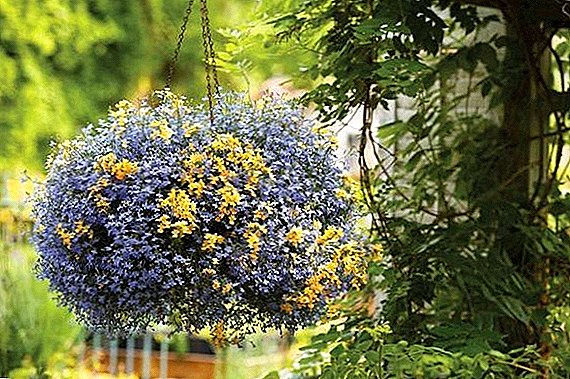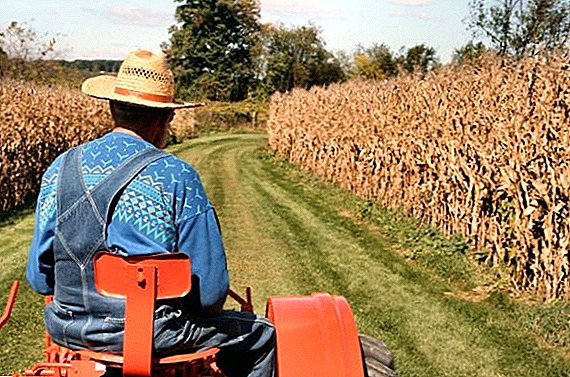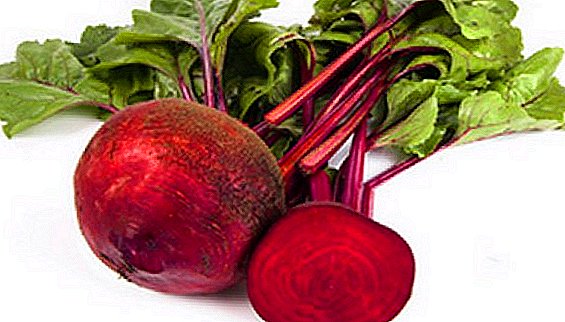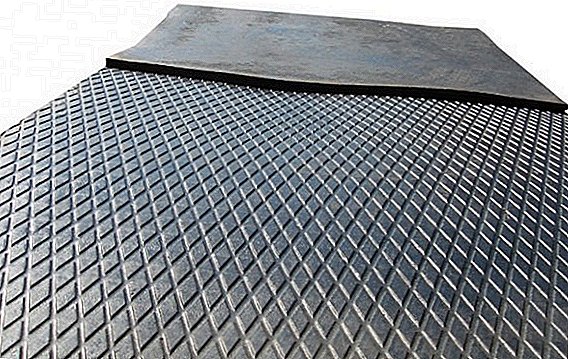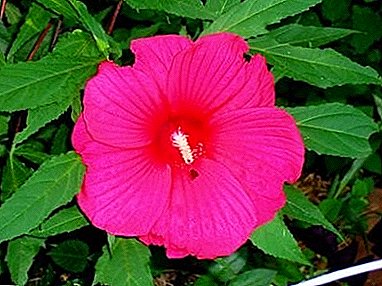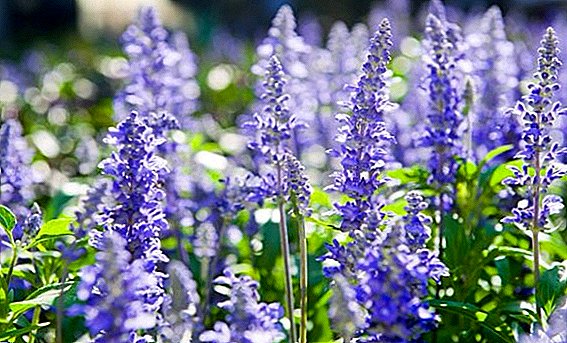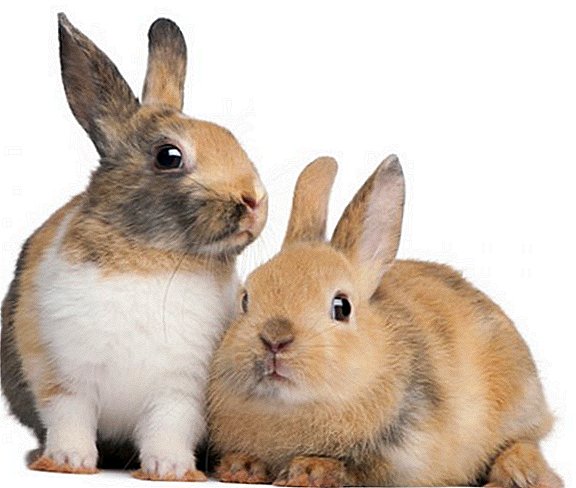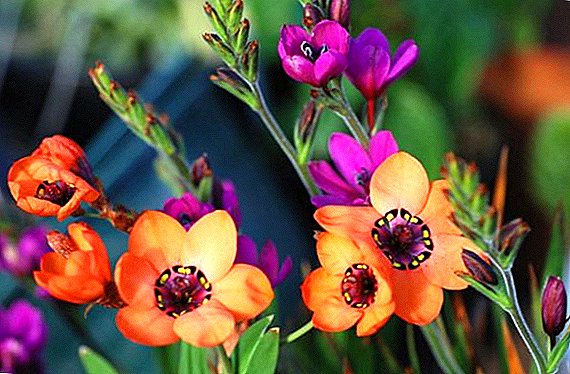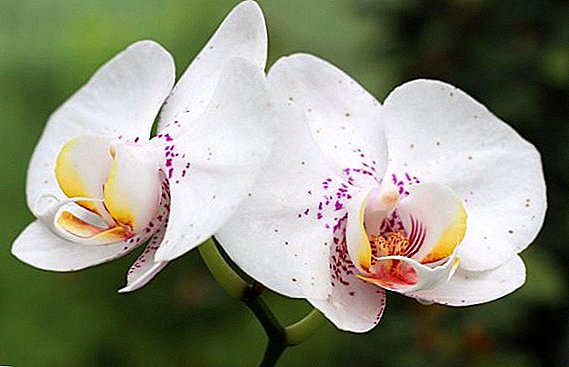 Orchid owners with trepidation refer to the appearance of lateral shoots (so-called children) on their favorites, because this is a good opportunity to propagate the plant and, at the same time, challenge their flowering abilities. It is not easy to grow orchids, and growing a full-fledged plant from a scion is doubly difficult. The article will discuss what are the children of orchids and how to properly transplant them.
Orchid owners with trepidation refer to the appearance of lateral shoots (so-called children) on their favorites, because this is a good opportunity to propagate the plant and, at the same time, challenge their flowering abilities. It is not easy to grow orchids, and growing a full-fledged plant from a scion is doubly difficult. The article will discuss what are the children of orchids and how to properly transplant them.
Peculiarities of reproduction by lateral layers
Orchid babies are the beginnings of a young flower appearing on an adult plant. They are also called keiks (from Hawaiian "keiki", which means "child" or "children"). For children, the presence of leaves (the most important difference from the air root or peduncle) and the root system. Experts do not agree on how good the appearance of these shoots is.
According to one of the points of view, kids are evidence of poor care for the plant and its attempts to reproduce its continuation by dividing before death. However, there is a diametrically opposite opinion, stating that the scions of an orchid emerge from a sleeping flower bud only under ideal conditions of detention:
- temperature conditions (from + 17 ° С at night to + 31 ° С during the day);
- air humidity 50%;
- good illumination (diffused light);
- correct pruning.
Important! In order to quickly grow roots on the layers, peat moss (sphagnum) is used, which (after soaking in water for half an hour) envelops the peduncle with a baby. To create an additional “greenhouse effect”, this nest of moss is covered with food film and fixed with a stick with clips.
Some flower growers stimulate the appearance of cuttings by shortening the peduncle and treating dormant buds with hormonal (cytokinin) ointment. Such a procedure is rather controversial (in terms of effectiveness and safety for an orchid) and only a mature (older than 3 years) and perfectly healthy plant can be exposed to it. Otherwise, stimulation can lead to orchid disease. Species such as phalaenopsis and, more rarely, dendrobium are most prone to the formation of babies.
Cakes can be located:
- on the peduncle;
- in the bosoms of the leaf;
- at the roots (basal);
- on the stem (basal).

Formation conditions for mature otvodka
In order to get strong, healthy cakes, from the moment of the appearance of the layers and before their transplantation (germination phase), the following conditions must be maintained for the orchid:
- high-quality watering with an interval of 5-10 days;
- periodic irrigation of the plant with water (watering under the shower, spraying with a spray gun) and washing the leaves on both sides (to get rid of dust and improve gas exchange);
- good lighting (daylight hours 12-14 hours);
- air temperature is +22 ... + 25 ° С;
- sufficiently high air humidity (at least 50-60%);
- top dressing with nitrogenous fertilizers.
Important! Before separating the baby, it is recommended to wait until the end of flowering, so as not to expose the adult plant to stress and let the cake form healthy roots.
Period and time of formation
Usually babies appear after flowering. Most often this occurs in the spring and summer. In the cold season it is difficult to expect that the orchid will start young shoots (due to the lack of lighting and the dryness of the air caused by central heating). The phase of germination of babies lasts an average of six months. During this time, they form roots and leaves, accumulate nutrients. Transplanted children need at least 2-3 years to become a mature orchid and begin to bloom.
How to determine readiness for transplantation
It is important how not to overdo the baby on the fallopian orchid (so that the roots do not grow excessively), and not to transplant too early (otherwise it will hurt and take root for a long time). There are clear criteria for the readiness of children for separation:
- the presence of 2 pairs of full leaflets;
- 3-4 roots 5 cm long

How to transplant baby orchids at home
The main principle of transplanting orchid cakes is to injure the adult plant and the baby as little as possible. In this regard, it is necessary to carefully prepare the tools and materials, as well as to study the procedure for action depending on the location of the cutting.
Preparatory work
To separate a young plant, you will need:
- sharp garden pruner or scissors (previously sterilized with alcohol);
- comfortable silicone gloves;
- crushed charcoal or cinnamon for disinfection of the cut;
- tank for the transplanted babies (usually a transparent plastic pot with a diameter of 7-10 cm with holes at the bottom), a plastic cup, a mini-aquarium or foam for a hothouse;
- small fractional substrate for growing children with roots or base (expanded clay, pebbles, moss) for greenhouse, if you plan to grow children without roots;
- a drainage layer (for example, a small broken brick, a pebble) laid out on the bottom of the pot in front of the substrate;
- alcohol for the treatment of pruners after the manipulation.
Video: Orchid Branch
Soil specifically designed for orchids, you can buy in a flower shop or prepare yourself from a mixture of the following ingredients, taken in equal proportions:
- pine bark, boiled with ash and cut into 1 cm pieces;
- peat moss;
- charcoal.
Walkthrough Transplant Guide
Consider the nuances of the separation of children, based on their location on the parent plant.
Did you know? Before gardeners learned how to propagate orchids correctly, they were followed by a real hunt. Farms and greenhouses sent employees to the tropics to import plants. The profession of the orchid hunter was dangerous, but well paid, because for some species it was possible to gain up to £ 1,000 in English auctions.
On the peduncle
Most often, kids are located exactly on the flower stalks. To transplant a young offspring, you must perform the following steps:
- The babe is cut off from the peduncle, leaving its part (about 1-2 cm) at the base of the layer.
- Place the cut is dried for half an hour, and then powdered with coal or cinnamon.
- The baby herself is also dried for 40-50 minutes.
- The shoot is placed in the middle of the pot so that the root neck is at the level of the edge of the container.
- Spreading the roots of the kids, fill the pot with the substrate.
- Lightly tap the pot to make the substrate a donkey.
Video: branch and planting babes orchids
From the bosom of the leaf
The algorithm of action is the same as in the separation from the peduncle. In this case, the baby is also separated along with a small part (1-2 cm) of the adult plant.
Radical
Sometimes cakes are located near the roots of the parent plant. First of all, you need to check that such children have their own roots: to do this, remove the upper part of the substrate. If the keik has a root system, such a process is separated very carefully so as not to damage both the adult plant and the young individual. Beginning growers often prefer not to remove such shoots at all, leaving them to grow with the mother orchid.
Learn more about how to propagate an orchid at home.
Without roots
You can transplant rootless cakes aged at least 4 months. The rudiments of the root system in these layers are under the scales at the base of the outlet, so before transplanting these scales must be removed. To grow a cake without roots, you need to create special conditions. To do this, use:
- Teplichku. She may be a transparent plastic cup. A drainage layer (small pebbles) is laid out on the bottom of the cup to give stability to the greenhouse. Shredded bottle caps and pine bark are placed on the pebbles to insulate stones that can become very hot or cool. A thin layer of fresh peat moss is laid out on top (this layer will need to be changed from time to time, as old moss can cause diseases for children). At 1.5 cm from the upper edge of the cup, holes are made for the support (a small piece of bark) to which the baby is attached (the process must not touch the moss in any way). As a material for tying the babe to the support, you can use strips of synthetic tights. The greenhouse is covered with a light plastic bottle or bag in which ventilation holes are cut out. In the presence of a mini-aquarium, you can place a greenhouse in it, taking care of the presence of a lid, which can be removed for ventilation. Aquarium cover is not sealed, leaving a small gap. The greenhouse is placed on the window sill (you should pay attention to protection from direct sunlight or from hypothermia in the winter), and ideally placed under fluorescent lamps.

- Styrofoam. This is a good heat-insulating and non-moisture-consuming material, in which you can also grow a baby. To do this, a recess is made in the foam plastic into which the young plant is placed, securing it, and the foam itself is placed in water so that the base of the orchid outlet does not touch it, but at the same time is not further than 3 mm from the water. The container with water is covered with glass or film.
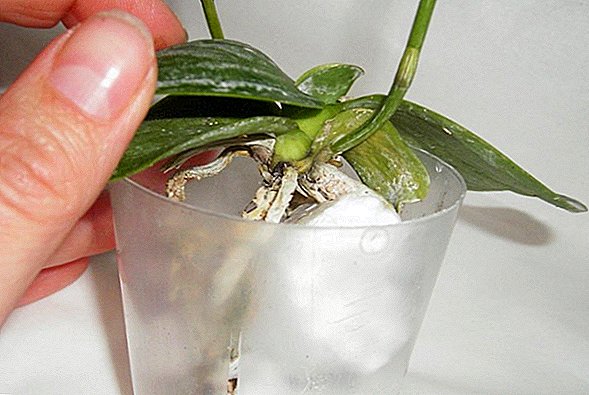
Basal
These are babies that appear on the stem of the mother plant (often at the core site). They are characterized by the absence of roots and the inability to grow independently, receiving batteries from a different source than an adult plant. Basal children are not separated, but coexist with the parent orchid, subsequently taking its place.
Did you know? In western Australia you can find an orchid growing underground. Rizantella Gardner is a small plant with a pleasant aroma, feeding on the connection to the local shrub of the Tea Tree family through the root system.
Aftercare
There is some difference between caring for transplanted children and an adult plant:
- Water transplanted layers should be no earlier than five days later (for the prevention of infection). Watering is done every three days with warm and settled water. Children without roots, grown in a greenhouse, are not watered, but are sprayed daily in the daytime with finely dispersed spray guns, preventing condensation on the walls of the greenhouse. Waterlogging is detrimental to the orchid, so it is better to pay attention to the humidity of the air than to the intensity of watering.
- Especially important for young plants is good, uniform lighting. Regardless of the time of year, daylight hours should last at least 12 hours a day.
- It is also necessary to supply fresh air and air the greenhouse, but without drafts. The greenhouse is gradually opened for longer periods of time, tempering the children.
- It is necessary to maintain the temperature of + 22 ... + 25 ° С without sudden drops.
- In water for irrigation and spraying should be added fertilizer with a high content of nitrogen (diluted 2 times baboutmore water than indicated on the package). Greenhouse babies are fed twice a week, and transplanted into pots - once a week. Top dressings reduce in process of growth.

Possible difficulties
Most often when growing orchids you can face such a problem as fungal diseases, in particular root rot. The fungus-affected roots soften, become wet, the leaves turn yellow and dry. The cause of the disease is the wrong irrigation regime: too frequent irrigation leads to the fact that the substrate does not have time to dry, there is an accumulation of fluid and the absence of normal gas exchange.
To prevent fungus, you must:
- observe the correct mode of watering;
- not too tightly tamp down the substrate (for oxygen access to the roots);
- change the substrate from time to time;
- prophylactically treat the plant with organic fungicides (for example, "Fitosporin").
You will be interested to know what should be the soil for planting and growing orchids.
In this case, the orchid should be washed with a solution of soap and treated with "Fitoverm" or "Aktellik". To grow a full-fledged plant from orchid babies is a difficult task that requires effort and patience. However, they will pay off handsomely when you become the owner of another tropical beauty. The recommendations given in the article will help in this.




